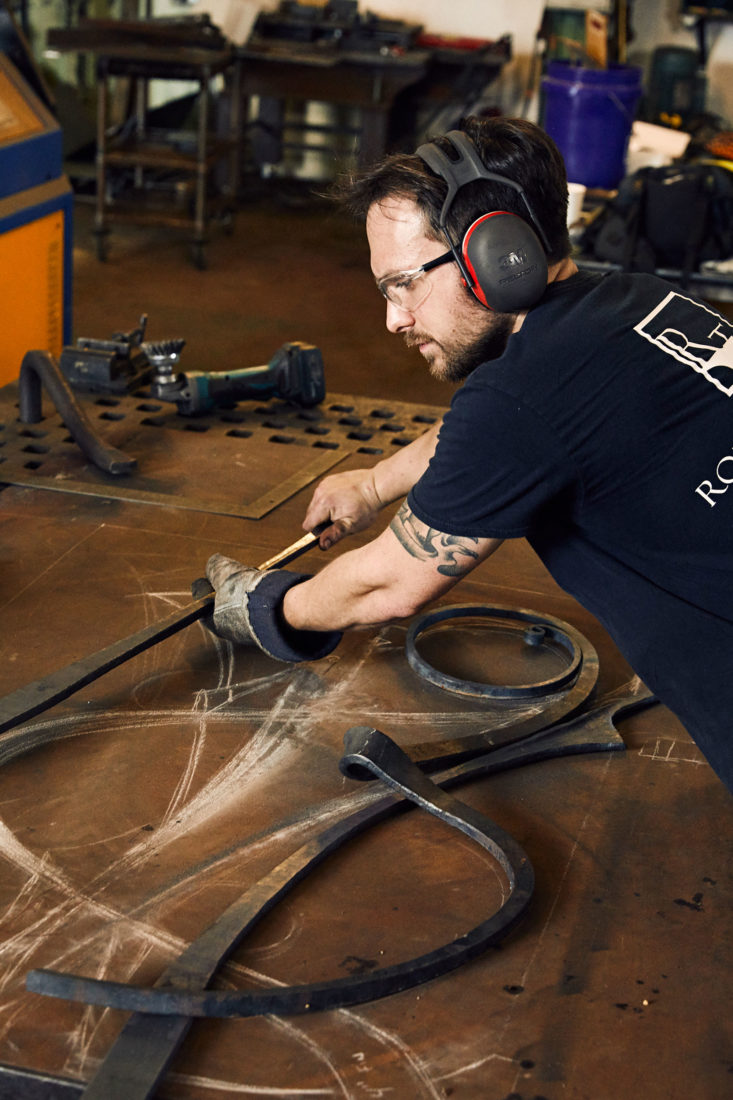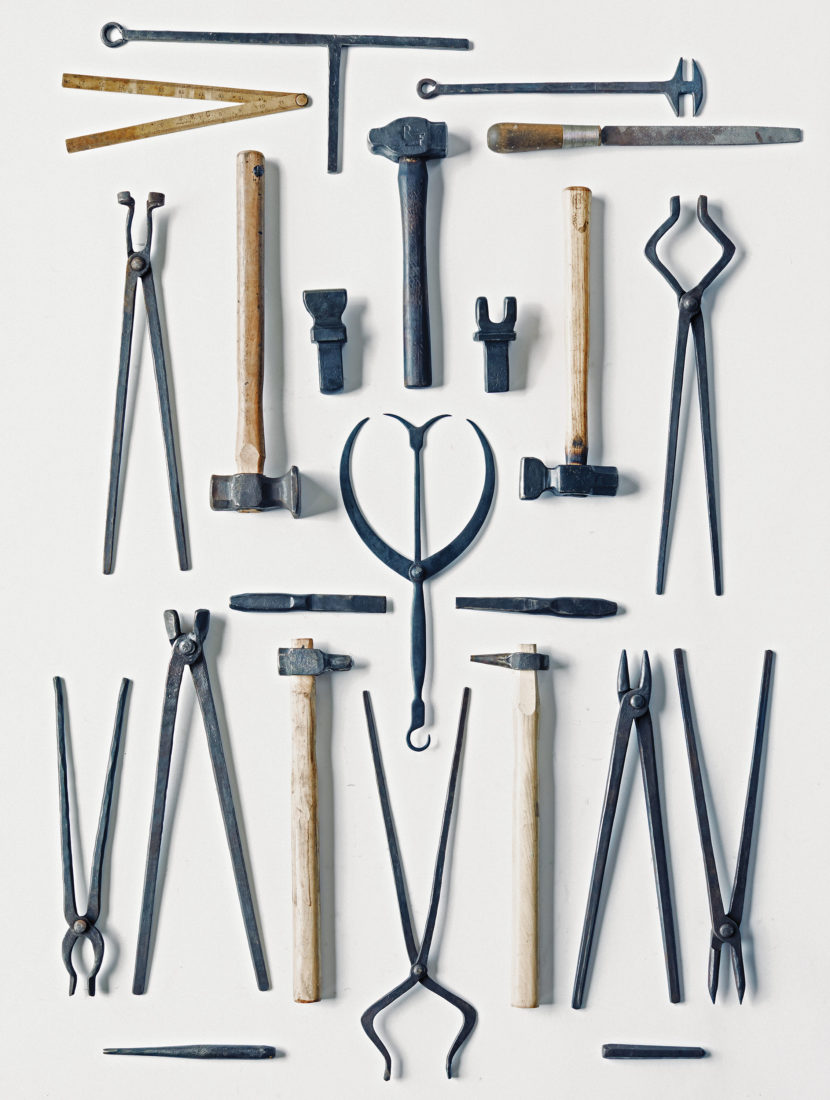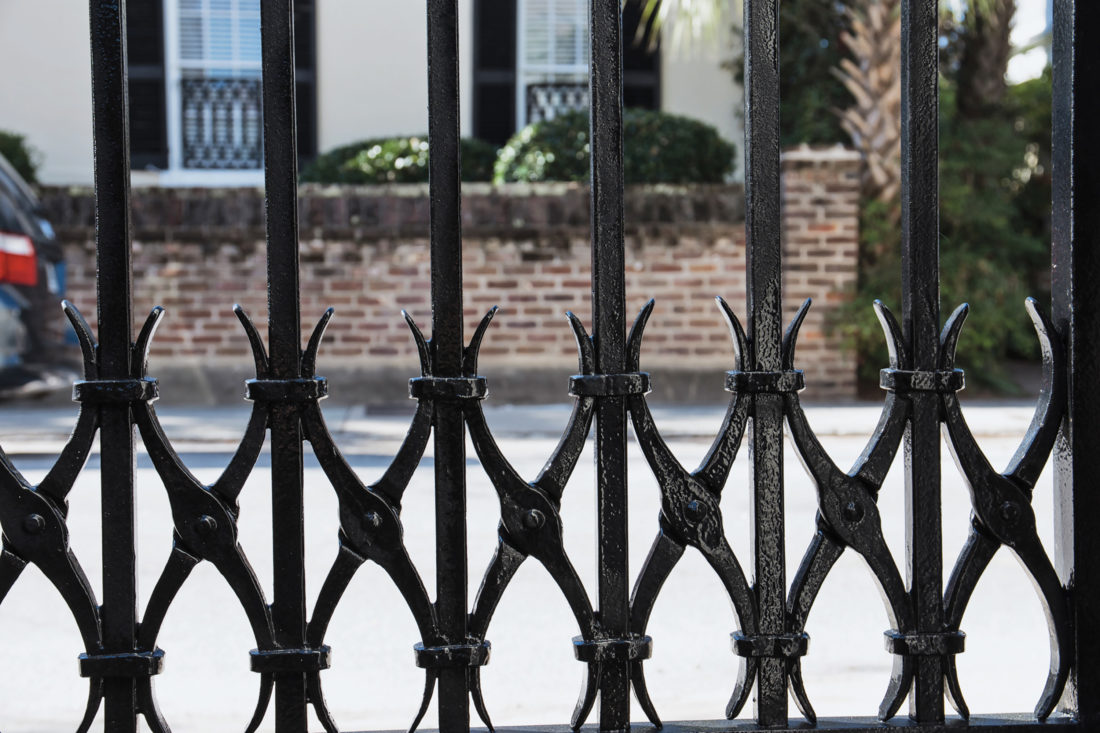Fact: July in Charleston is hot. For master blacksmith Robert Thomas, of Robert Thomas Iron Design, it’s downright Dante-like—temperatures in his studio, which he opened in 2013 in the former tool-and-die shop at North Charleston’s decommissioned Navy base, regularly hit 135 degrees in mid-summer. And yet, he never seriously considered putting down roots anywhere else. “The tradition of blacksmithing and ironwork is such a huge part of the fabric of Charleston,” Thomas says. “I can tell people that I’m a blacksmith and they get it,” Thomas says. “There’s already an appreciation.”

Photo: Sully Sullivan
Robert Thomas at work in his North Charleston metal shop.
Decorative ironwork became popular in the Holy City as early as the mid-1700s, but the first half of the nineteenth century saw a marked uptick in demand that lasted until the Great Depression, when money for ornamental architecture nearly disappeared. But the work of famed Charleston blacksmith Philip Simmons was impressive enough to draw clients even during those lean years. In his lifetime, Simmons created more than five hundred gates, fences, and other pieces—many of which remain today. The survival of so many exceptional examples of this type of metal work helps define the Holy City’s look and feel.

Photo: Sully Sullivan
Basic tools of the blacksmithing trade.
But Thomas—who graduated in 2012 from the National School of Blacksmithing in Hereford, England, and spent several more years honing his skill under the tutelage of some of the best contemporary metal artists in Europe, the United States, and the Middle East—isn’t content to live in the past. “I’m working to keep two-hundred-year-old techniques alive not just for reproduction or preservation but new creation,” he says. “Most of our jobs are new commissions—projects that allow us to make beautiful things from a modern perspective.” For example, he recently completed a stretch of new fencing that spanned an entire city block in Pittsburgh, Pennsylvania. The design sketches alone took upwards of a hundred hours; the full structure took more than a year to complete.

Photo: Sully Sullivan
An original ornamental gate and fence project in Pittsburgh.
That’s not to say that Thomas doesn’t take on restoration projects, though. “Probably ten percent of our work is restoration, but we only take on a job if the piece is historically significant.” Recently, he undertook the rehabilitation of an early Philip Simmons gate and fence on Charleston’s iconic Murray Boulevard—painstakingly scraping off seventy-plus years of paint and removing and replacing damaged bits of metal to restore the wrought ironwork to its former glory.
Discover these works and more in his beautiful new book, The Art & Craft of the Blacksmith: Techniques and Inspiration for the Modern Smith, where Thomas and Charleston-based photographer Sully Sullivan bring to life two centuries of technique through a series a contemporary how-to projects, bridging the gap between his respect for the past and his passion for the future of blacksmithing. “Sully changed it from a straightforward how-to tome to a coffee table book that allows people who have no interest in picking up a hammer to appreciate the beauty of the craft,” Thomas says. And that’s all he really wants.
Photo: Sully Sullivan
Driveway gate at a Charleston residence.
1 of 5
Photo: Sully Sullivan
Tyler Bickerstaff, a blacksmith at Robert Thomas Iron Design, forges a custom hinge for a historic restoration project.
2 of 5
Photo: Sully Sullivan
Sketches of Thomas’s Pittsburgh project.
3 of 5
Photo: Sully Sullivan
Anvil work in action.
4 of 5
Photo: Sully Sullivan
A custom staircase railing Thomas created for the Southern First Bank in Charleston.
5 of 5













